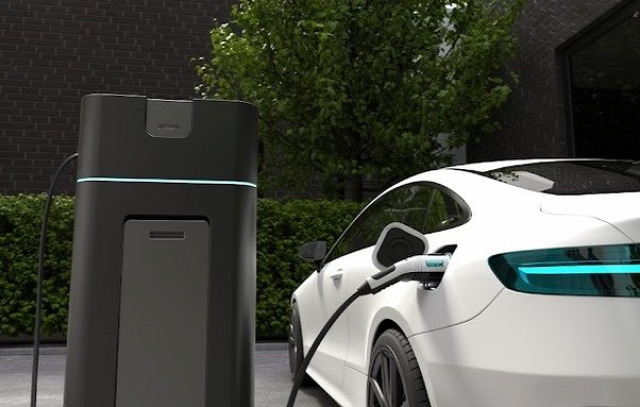
The evolution of vehicle engine propulsion technology, from coal-fired engines to gasoline- and electric-fired engines, has undoubtedly influenced the economy in crucial ways. Ultimately, this evolution has improved the automotive industry’s operational capabilities, including enhanced safety measures, connectivity, cost reduction, and consumer convenience. With the changing behavior of consumers as well as more stringent environmental regulations, the global automotive industry is undergoing extensive transformation.
The global on-board charger market is expected to reach $43.94 billion by 2032 from $2.16 billion in 2021, growing with a CAGR of 29.54% during the forecast period 2022-2032. Due to the rapid depletion of natural resources (especially fossil fuels), there has been a growing need for alternate energy to reduce the reliance on fossil fuels for transportation. As a result, governments, environmental agencies, and automobile manufacturers have developed alternative fuel vehicles, and consumers have accepted the electric vehicle (EV) as an alternative option, which has evolved from a niche solution into a practical choice for mobility in the 21st century. EV manufacturers are focused on developing energy-efficient, cost-effective, and compact drivetrain components, such as inverters, on-board chargers, microcontrollers, and rectifiers. An on-board charger (OBC) is a key component in any electric vehicle powertrain that manages the energy flow from a power grid to the battery inside the vehicle.
Passenger Vehicles Segment Expected to be Dominant over Commercial Vehicles throughout the Forecast Period
The use of on-board chargers is mainly categorized into two vehicle types of EVs, i.e., passenger vehicles and commercial vehicles. The passenger vehicles segment is expected to be the leading segment in the market as the sales of electric passenger vehicles are anticipated to increase globally. Commercial vehicles considered for this report consist of light electric vehicles, heavy buses, and heavy trucks. Production and sales of passenger vehicles are anticipated to be higher than commercial vehicles, as more users are rapidly adopting EVs and exchanging their IC engine vehicles for EVs due to their cost efficiency and various government subsidies, among others.
Battery Electric Vehicles (BEVs) Expected to Dominate the Global On-Board Charger Market for EVs
The global on-board charger market encompasses two major types of electric vehicles, i.e., plug-in hybrid electric vehicles (PHEVs) and battery electric vehicles (BEVs). These vehicle types are present in the form of both passenger and commercial vehicles. While PHEV models have been present in the market for many years, the development of battery technology along with government norms for increased vehicle efficiency has led to an increase in the adoption of BEVs as they are powered solely by the battery systems in the vehicle. The sales of BEVs are anticipated to increase compared to PHEVs due to the decreasing cost of such pure electric vehicles and the development of EV infrastructure in various countries. The rise of BEVs makes it more crucial for automotive OEMs to ensure that the on-board charger in the EVs can optimize the driving system.
Request A Free Detailed Sample on On-Board Charger Market!
Unidirectional Expected to Dominate the Global On-Board Charger Market for EVs
Unidirectional on-board chargers hold a most significant market share in the global on-board charger market. The demand for bidirectional on-board chargers has increased drastically in recent years. It is owing to the different bidirectional charging options such as vehicle to grid (V2G), vehicle to load (V2L), and vehicle to vehicle (V2V). Most manufacturers in the market have already started offering different variants in the bidirectional on-board charger segment. At the end of the forecast period, more than three-fourths of the on-board chargers will be bidirectional.
Asia-Pacific and Japan to Witness Fastest Growth in Global On-Board Charger Market for EVs
The demand for on-board chargers varies according to various regions. China is currently the largest region in the on-board charger market. Increased sales of electric vehicles in Asia-Pacific and Japan countries such as India, South Korea, and Japan are expected to boost the market. Rising CO2 emissions in India and Japan have led to several concerns from the countries’ governments. Government incentives for buying electric vehicles, technological advancements, and extensive investments in the development of charging infrastructure are some major drivers propelling the market’s growth in the region.
As a result, various initiatives have been launched by the government to promote the development and adoption of electric vehicles, which are expected to reduce vehicular emissions and potentially replace petrol and diesel engines in the future. In addition, concerted efforts by both governments and manufacturers to promote the sale of electric vehicles have led to the inclusion of high-performance on-board chargers inside electric vehicles to provide better driving experiences.
Access More: Get Detailed Insights on Electric Vehicles Market Research Reports in Automotive industry
Competitive Landscape
To gain market share, major on-board charger manufacturers are making various kinds of strategic moves. Some key highlights from BIS Research w.r.t. manufacturers of on-board chargers are:
- Delta-Q Corporation, KOSTAL Automobil Elektrik GmbH & Co. KG, Robert Bosch GmbH, and BorgWarner Inc. are some leading players globally.
- Infineon Technologies AG, Texas Instruments Incorporated, and Analog Devices, Inc. are some leading players globally in Tier-2 or component/subsystem suppliers for on-board chargers.
- New product launches are the most preferred strategy.
- Apart from product launch activities, expanding business and sealing new partnerships and collaborations are the other strategies being implemented.
- Most players have tie-ups with various electric vehicle OEMs and Tier 1 suppliers.

